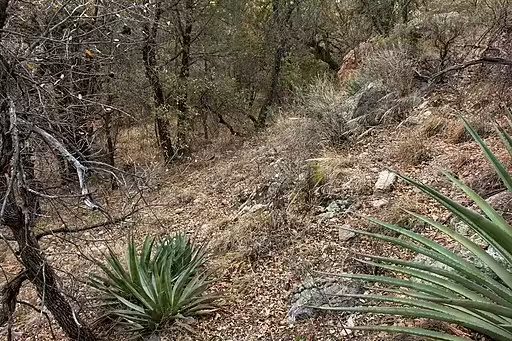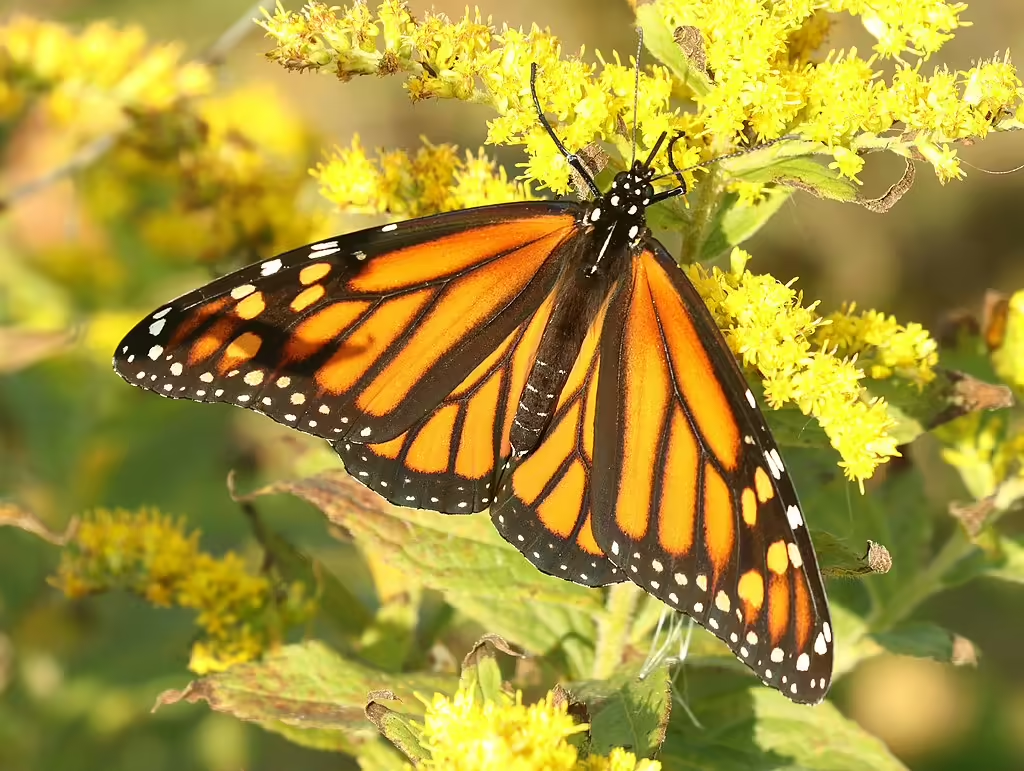Table of Contents for Pineneedle Milkweed (Asclepias linaria)
Pineneedle Milkweed (Asclepias linaria) is a herbaceous perennial that is native to the states of Arizona and New Mexico in the United States and ranges south into Mexico. This plant is a host to the Queen (Danaus gilippus) and Monarch (Danaus plexippus) butterflies. Growing from 1.5 to 6 feet tall, this species grows in open woodlands, limestone ridges, and waste places. The greenish-white flowers bloom from April to October and the plant is hardy in zones 9-11.
Taxonomy and Naming of Pineneedle Milkweed (Asclepias linaria)

Taxonomy
Pineneedle Milkweed (Asclepias linaria) was originally named and described by Antonio Jose’ Cavanilles, a Spanish botanist in 1791. It has kept this same name since and is a member of the Dogbane Family (Apocynaceae).
Meaning of the Scientific and Common Names
Scientific Name
The genus name, Asclepias, is named for the Greek god of healing, Asklepios (Flora of Wisconsin). The species name, linaria, is Latin for needle.
Common Name and Alternative Names
The common name refers to the needle-like appearance of the leaves. Some other common names include narrow-leaf milkweed (Felger, et al 2012) and threadleaf milkweed (davesgarden.com). In Mexico, this plant is known as Venenillo (Watson 1883). This species is planted on the island of Bermuda and is called Ranstead Milkweed there (Britton 1918).
Physical Description

- Plant Type: This plant is suffruticose or shrubby.
- Height: 1.5 to 6 feet tall
- Stem: The stem is woody and pilose when young but glabrous in age (Woodson 1954).
- Leaves: The leaves are approximate, sessile, filiform and are 0.5 to 2 inches long and 0.04 inches wide.
- Flower color: greenish-white (Woodson 1954) to white (Gentry 1942).
- Blooming period: This plant blooms from April to November.
- Fruiting type and period: This plant has follicles that mature in the late summer and fall.
Range of Pineneedle Milkweed in the United States and Canada

This milkweed species is native to the states of Arizona and New Mexico in the United States. Its range extends south into Mexico and Central America.
Habitat

This species grows in open woodlands, rocky hills, sandy slopes (Woodson 1954), open ground (Meagher 1995), fields (Laferriere 1994), and limestone areas (Smith 1965).
Hosted Insects

This species is a host for the Monarch Butterfly (Danaus plexippus), the Queen Butterfly (Danaus gilippus).
Other Supported Wildlife

This species is a nectar source to other butterflies, skippers, bees, and wasps during the growing season. A wasp (Eucerceris montana) has been noted to nectar on this species in Mexico (Scullen 1968). One study (McVaugh 1952) noted that this plant was particularly attractive to bees and wasps.
Frequently Asked Questions
Is this plant poisonous?
Like other milkweeds, it has cardiac glycosides (cardenolides) and is considered to be poisonous with ingestion.
Does this plant have any ethnobotanical uses?
The Native American Ethobotanical Database does not cite this species specifically, but milkweeds in general have been used for pharmaceuticals, fibers, and foods. In Mexico, this species has been used for post-partum baths, for cramps (Canales-Martinez, et al 2006), and for headaches (Standley 1920).
How is this plant distinguished from other milkweeds?
This species is most similar to long-hood milkweed (Asclepias macrotis), but differs in that long-hood milkweed has opposite leaves and pineneedle milkweed has alternate leaves (Kearney and Peebles 1942). In Mexico, this species is similar to Asclepias conzattii, but A. conzattii has much bigger leaves at 3 to 5 inches (Veronica 2003).
Is this plant invasive?
This plant has not been noted as being weedy and is restricted to the states of Arizona and New Mexico in the United States.
Gardening with Pineneedle Milkweed
Add Pineneedle Milkweed to Your Garden
The link below takes you to our product page where we get small commission from your purchase at no additional cost to you.

Hardiness
This species is hardy in zone 9-11. If your garden is within these zones and you have the right growing conditions (soil, moisture and exposure), you may well be able to grow this plant. However, if planted outside of its range, the hosted species may not recognize the plant or be harmed by ingesting a different species with an unfamiliar chemical composition.
Optimal Conditions
This species can grow in full sun to partial-shade in well-drained soil.
References
- Britton, Nathaniel Lord. 1918. Flora of Bermuda. (New York: Scribner and Sons).
- Canales-Martinez, Maria Margarita, Tzasna’ Hernandez Delgado, Nieto Cabellero. 2006. Analisis cuantitativo del conocimiento tradicional de las plantas medicinales en San Rafael, Coxcatlan, Valle de Tehuacan-Cuicatlan, Puebla, Mexico. Acta Botanica Mexicana 75: 21-43.
- Felger, Richard Stephen, Susan Rutman, Thomas R. Van Devender, and Steven M. Buckley. 2012. Checklist of the Vascular Plants of Organ Pipe Cactus National Monument, Cabeza Preita National Wildlife Refuge, and Tinjas Altas, Arizona. Canotia 8(1): 1-53.
- Gentry, Howard Scott. 1942. Rio Mayo Plants, A Study of the Flora and Vegetation of The Valley of the Rio Mayo, Sonora. Carnegie Institution of Washington Publication 527.
- Kearney, Thomas H. and Robert H. Peebles. 1942. The Flowering Plants and Ferns of Arizona. USDA Miscellaneous Publication 423.
- Laferriere, Joseph A. 1994. Vegetation and flora of the Mountain Pima village of Nabogame, Chihuahua, Mexico. Phytologia 77: 102-140.
- McVaugh, Rogers. 1952. A Trip to Botanically Little-Known Area in Queretaro. The Asa Gray Bulletin 1: 169-174.
- Meagher, Walter L. 1995. Flora of El Jardin Botanico, El Charco Del Igenio San Miguel De Allende, Guanojuanto, Mexico. Phytologia 78: 317-352.
- Scullen, Herman A. 1968. A Revision of the Genus Eucerceris Cresson (Hymenoptera: Sphecidae). United States National Museum Bulletin.
- Smith, C. Earle. 1965. Flora Tehuacan Valley. Fieldiana Botany v. 31 publication 987.
- Standley, Paul Carpenter. 1920. Trees and Shrubs of Mexico. Contributions from United States National Herbarium v. 23.
- Veronica, Juarez-Jaimes and Lucio Lozada. 2003. Flora del Valle De Tehuacan-Cuicatlan. Unversidad Nacional Autonoma de Mexico fasc. 37.
- Watson, Sereno. 1883. Contributions to American Botany. Proceedings of the American Academy of Science 18: 96-196.
- Woodson, Robert. 1954. The North American Species of Asclepias L. Annals of the Missouri Botanical Garden 41: 1-211.


